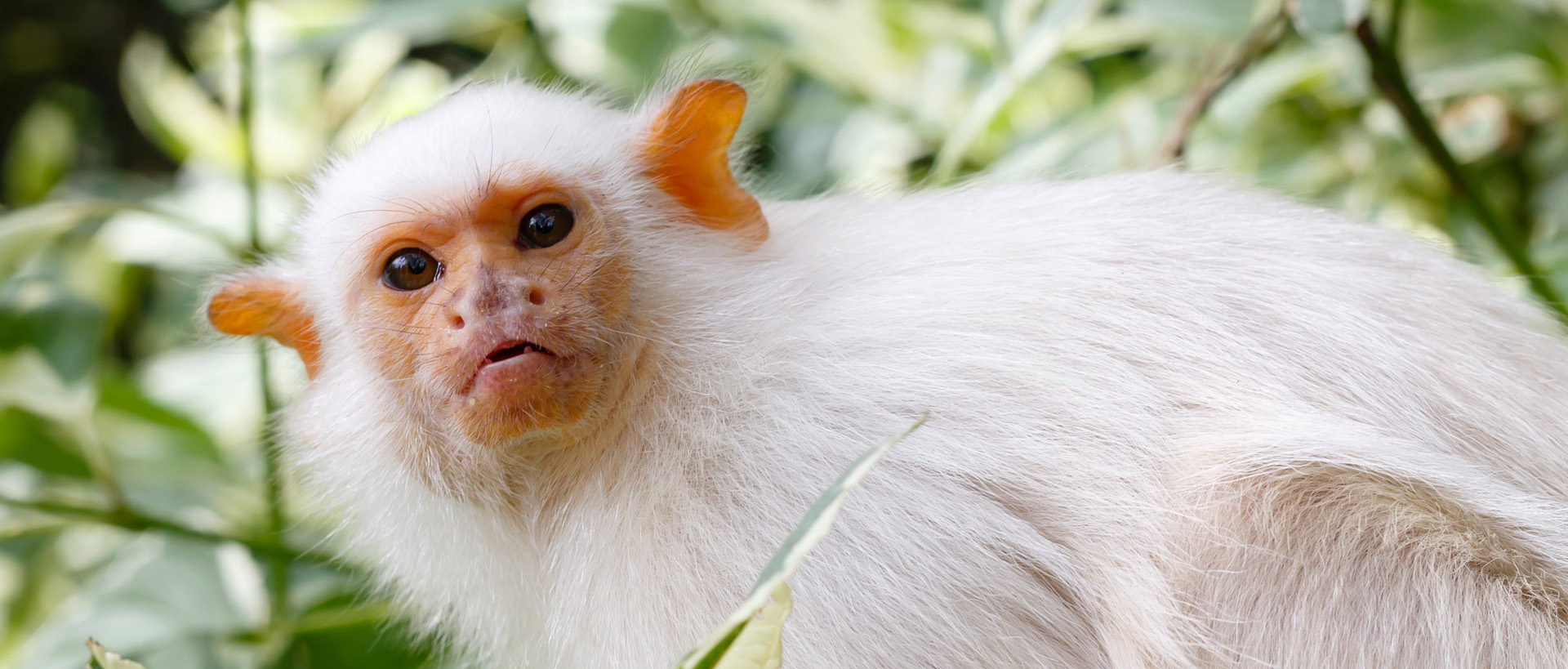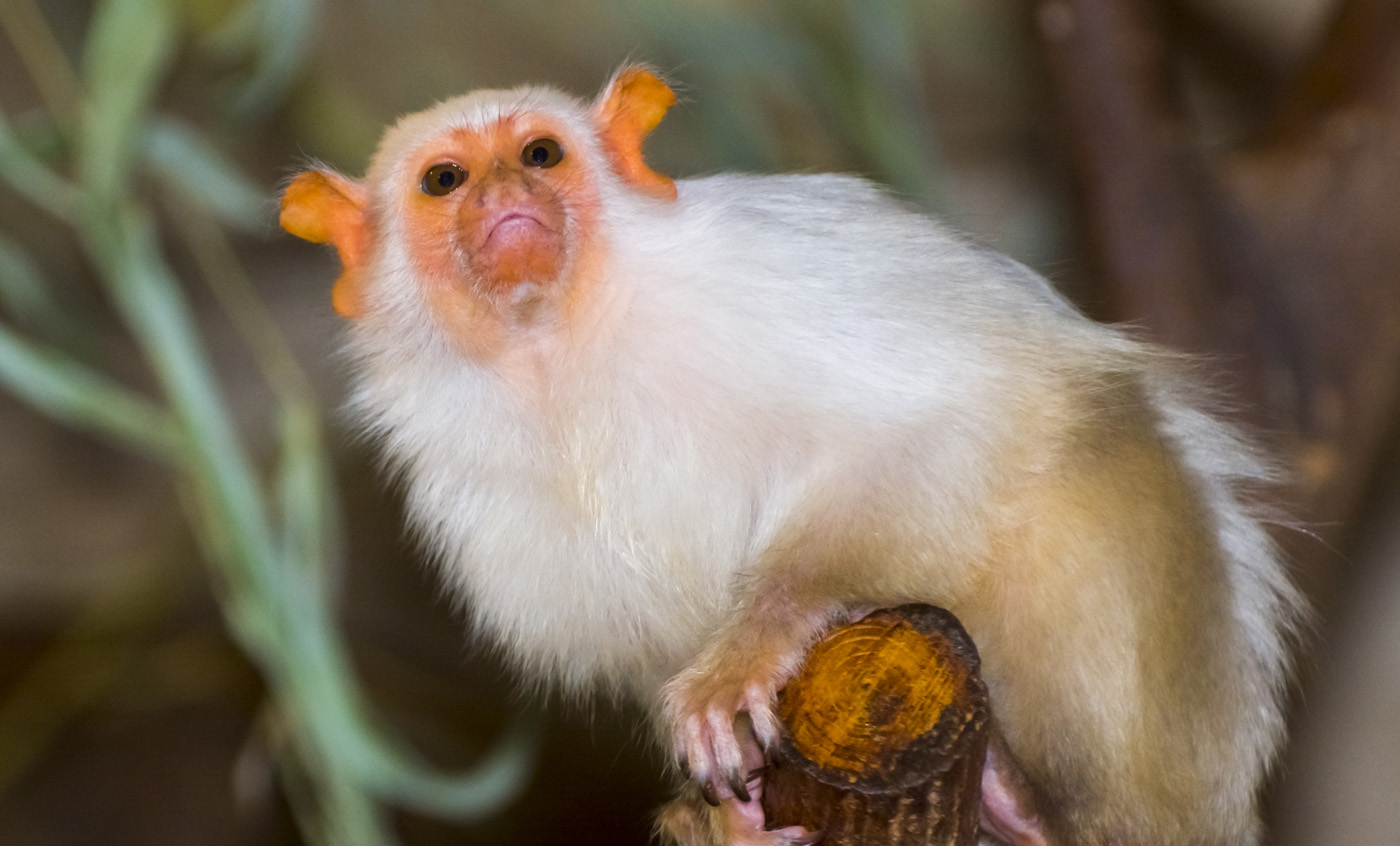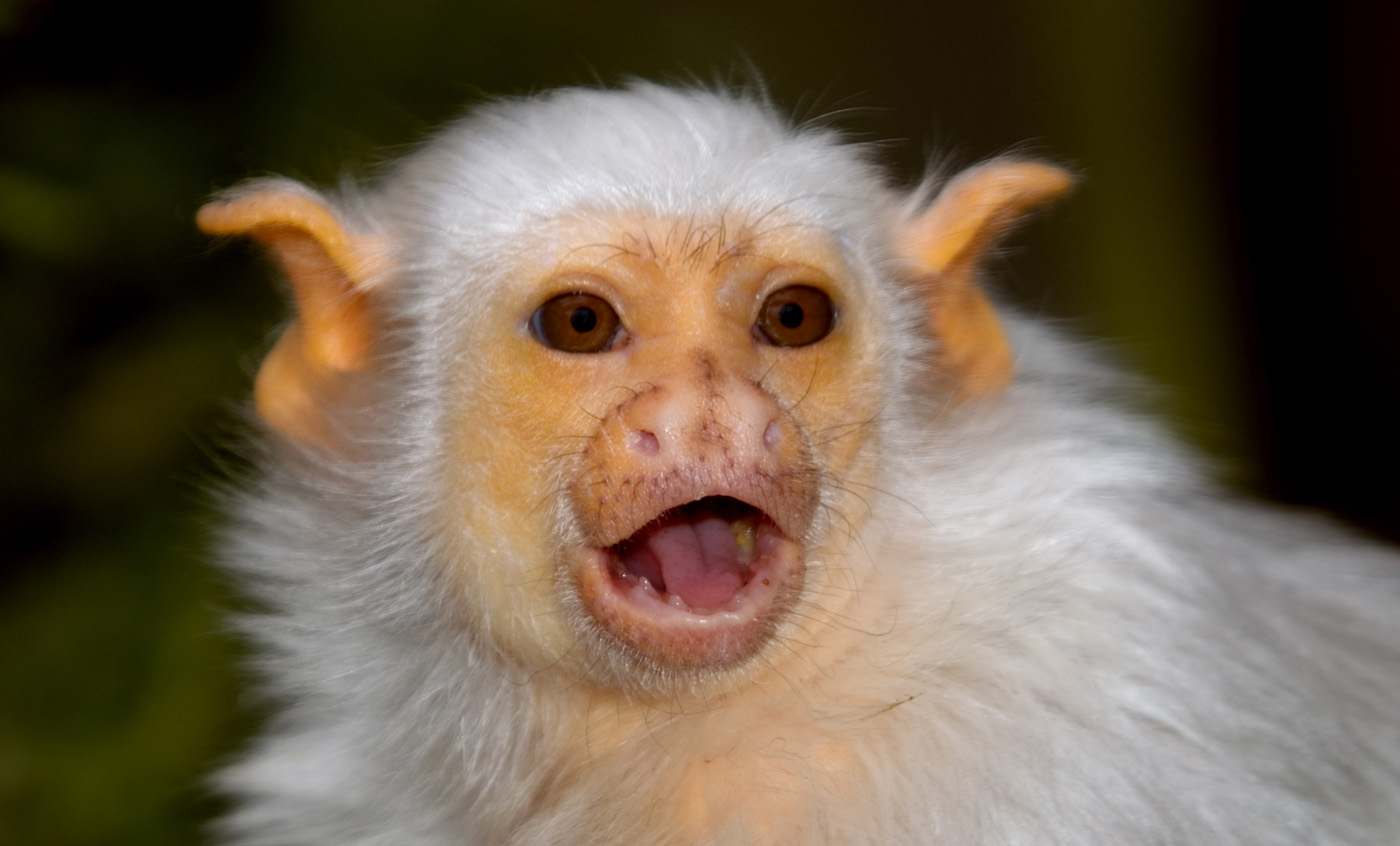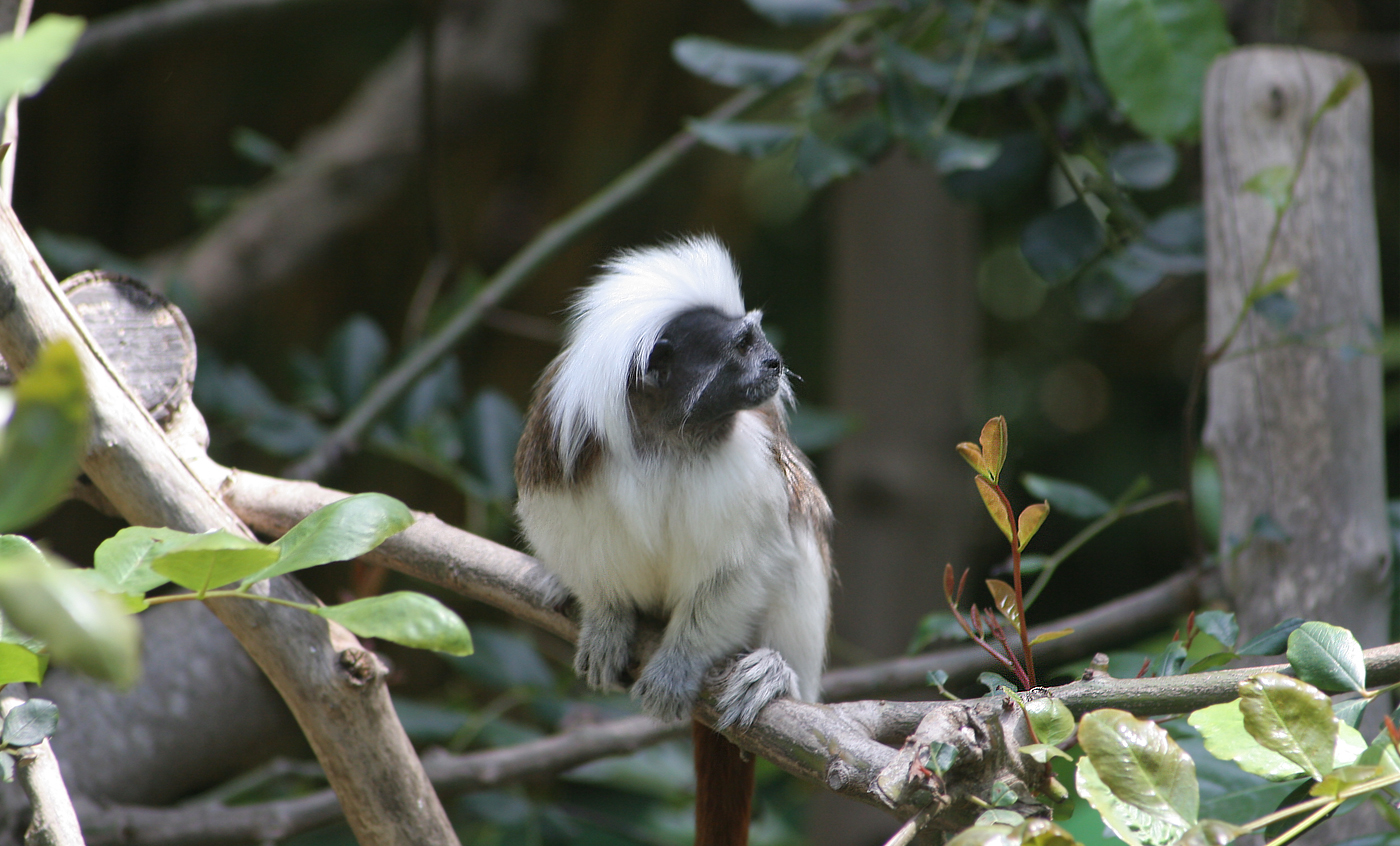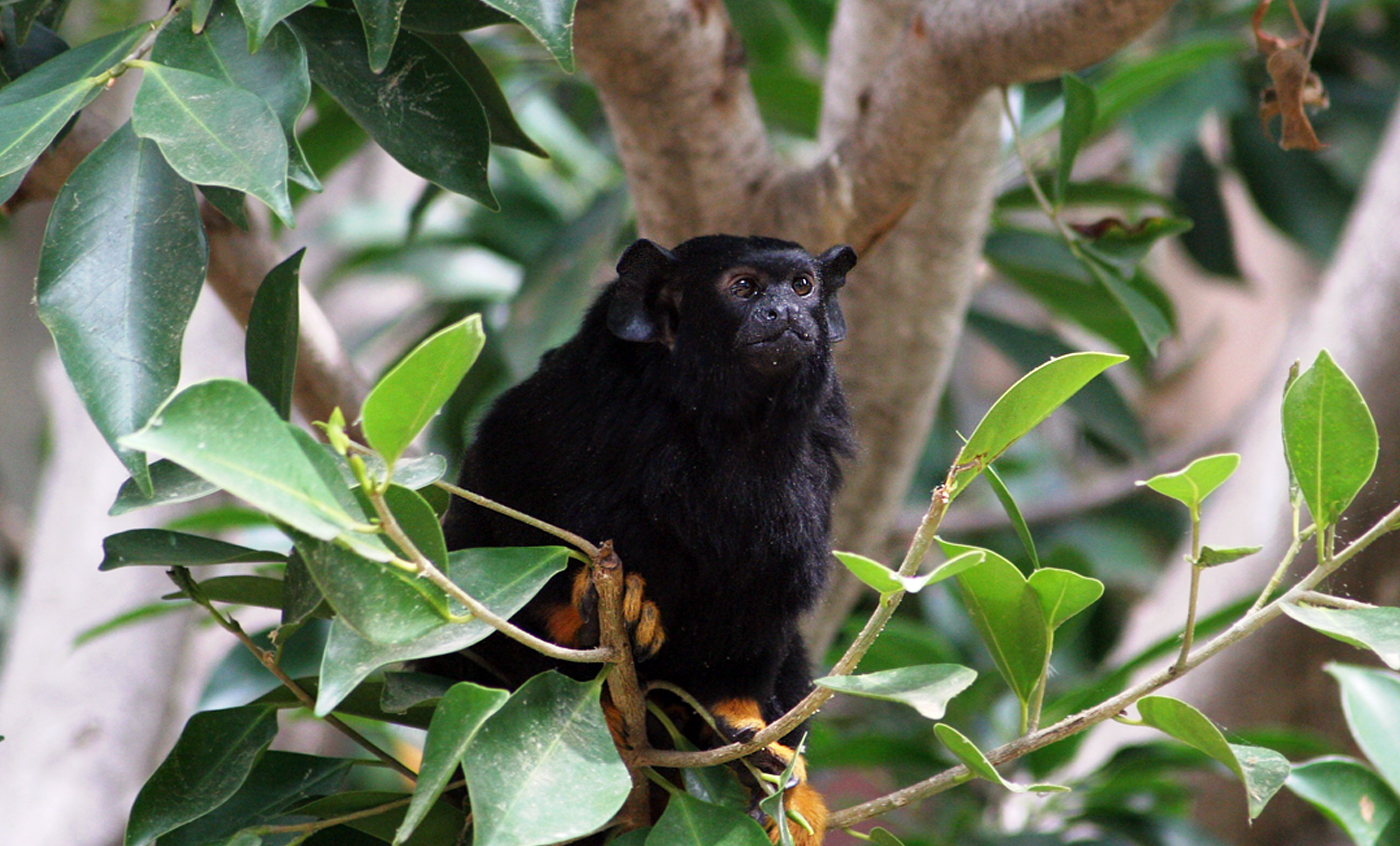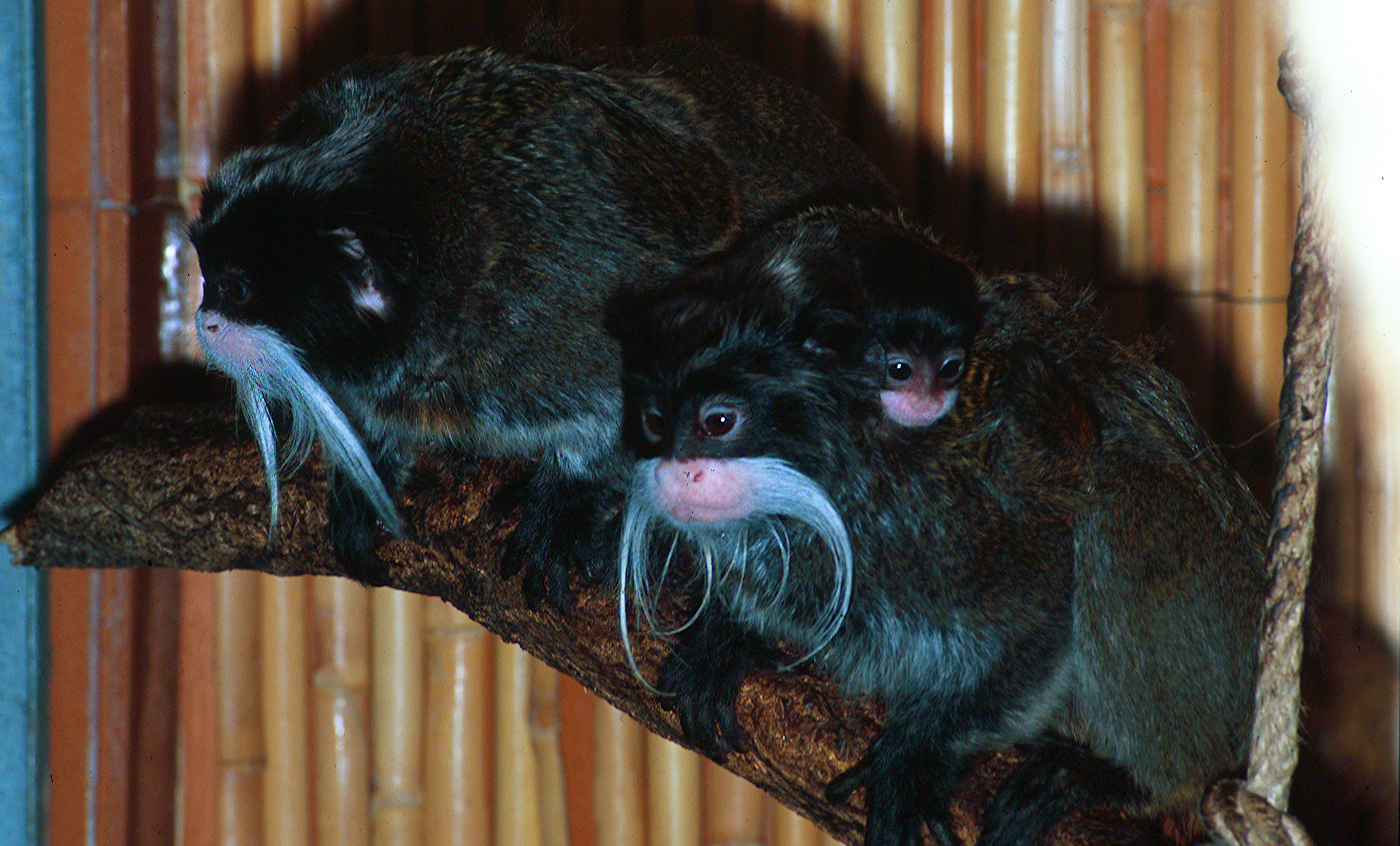Silvery marmoset
The silvery marmoset has a predominantly white fur and a dark tail. As most marmosets, apart from eating fruits, sprouts and small animals, it often feeds on different kinds of tree sap.
It inhabits the rainforests of north-eastern Brazil, in the southern area of the Amazon river. The accelerated destruction of the Amazon rainforest is causing a great decrease of its populations.
Breeding program
Natural habit
North-eastern Brazil, in the southern area of the final part of the Amazon river.
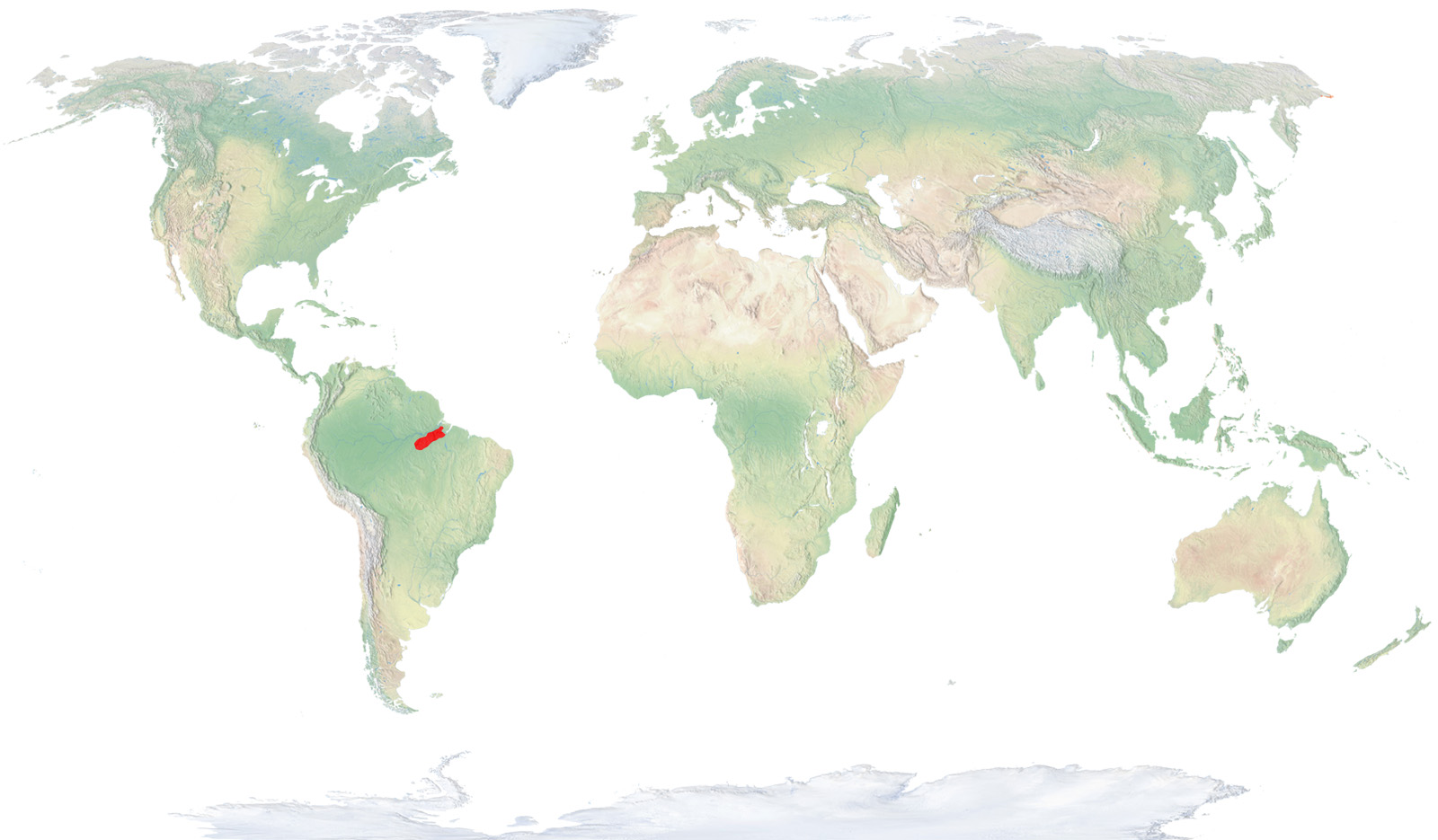
- Distribution / Resident
- Breeding
- Wintering
- Subspecies
Risk level
- Extint
- Extint in the wild
- Critically endangered
- In Danger
- Vulnerable
- Near threatened
- Minor concern
- Insufficient data
- Not evaluated
Taxonomy
Physical characteristics
Biology
Reproduction
Biology
This marmoset is characterized by its completely white hair, except for its tail, which is black. Its pinkish hue in the face and ears is also distinguishable.
Primary and secondary plain rainforests.
It feeds on small fruits, nectar, sap, resins, leaves, tender sprouts, insects and small vertebrates.
Gestation lasts for 145 days approximately and two babies are born each time, rarely one. Dominant females usually reproduce twice a year and their hormones inhibit the reproduction of the other females of the group.
It is a diurnal and arboreal animal that moves nimbly among tree branches, thanks to its claws in its hands and feet. It lives in small family groups formed by up to ten animals, who defend the territory with scent glands or by shouting.
Lately, its populations have been considerably reduced due to the loss of its habitat, caused by accelerated deforestation to plant crops and create pastures for domestic cattle. Although it is able to adapt quite well to partial degradation of forests, the fragmentation of its populations in small isolated groups causes considerable damage.
The Zoo of Barcelona takes part in the ESB of this species.



